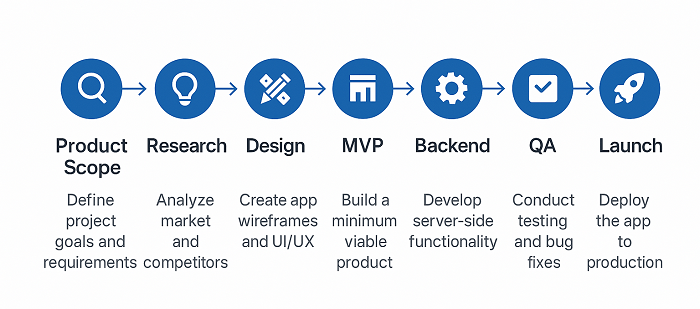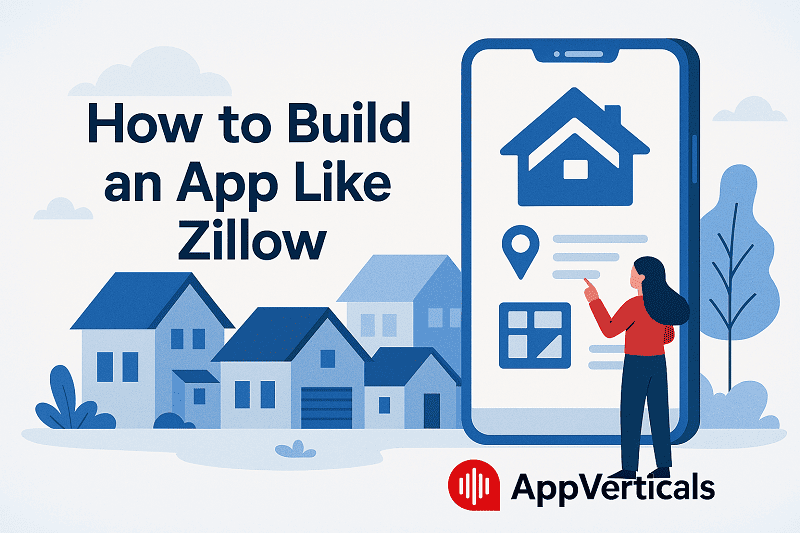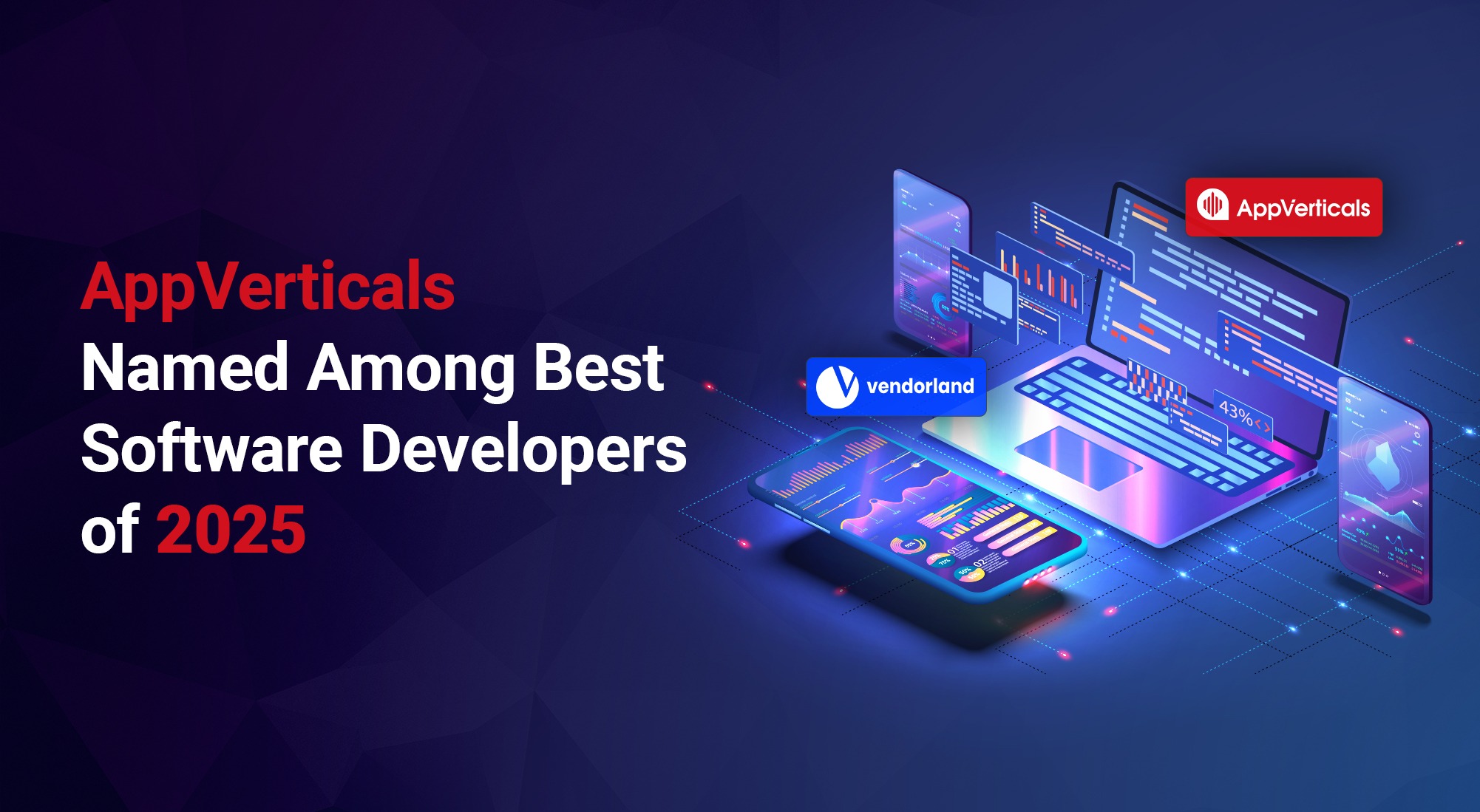Zillow didn’t just digitize real estate listings. It changed how people search for, compare, and act on property decisions by turning raw data into something instantly useful.
As more of the real estate market moves online, the interest in building similar platforms continues to grow. For entrepreneurs and businesses, that shift opens the door to new opportunities.
This guide explains how to build an app like Zillow. You’ll find insights on features, business models, development costs, and the technologies behind apps that redefine how property is bought and sold.
Think Zillow’s got it all figured out?
Let’s outdo them with your next real estate app.
What Is Zillow & How Does It Work?
Zillow is more than a property search engine. It’s a real estate technology platform that aggregates listings, displays estimated home values, and connects users with agents, lenders, and property managers across the United States.
At its core, Zillow lets users browse homes for sale or rent, filter properties based on location, price, and features, and access real-time market insights. Behind that simplicity lies a network of connected tools designed to serve different parts of the housing journey.
Zillow’s ecosystem includes:

- Zillow Rentals – A rental-focused app tailored for tenants and landlords
- Zillow Premier Agent – A lead generation platform for real estate agents
- Zillow 3D Home – A tool that creates interactive virtual tours to boost listings
For homebuyers, Zillow provides clarity. For sellers, visibility. For agents, a steady stream of leads. It brings the scattered elements of property transactions into one structured, accessible experience—bridging data and decision-making for millions.
Why Build an App Like Zillow?
Zillow didn’t create the need for real estate apps. It recognized it early, acted on it precisely, and turned usability into market dominance.
As property searches shifted from agents to screens, the idea of owning that screen became valuable. Today, the opportunity lies not in copying Zillow, but in building something that captures attention the same way — with clarity, speed, and intent.
For startups and real estate firms, mobile apps offer more than digital convenience. They unlock visibility, automate workflows, and convert attention into action. The benefits of mobile apps in real estate are no longer abstract. They are measurable, visible, and increasingly expected by the people who matter most: buyers, sellers, and agents.
An app isn’t just a feature of your business. It can be the core of it.
Top Features to Build an App Like Zillow
A real estate app doesn’t need dozens of features to succeed. It needs the right ones, working seamlessly together to guide users from curiosity to commitment. If you’re wondering how to make an app like Zillow, the answer lies in getting these features right. Many of the most effective Zillow app features do exactly that — combining clean design with functionality that feels obvious.
Here’s a breakdown of the core features that power that experience:

For Home Seekers
Advanced Search Filters
Let users narrow down properties by location, price range, number of bedrooms, square footage, and more.
Interactive Map View
Listings are plotted on a dynamic map with location-based search and street-level context.
Property Details & Media
High-quality photos, videos, and 3D tours along with pricing history, estimated value, neighborhood insights, and school ratings.
Favorites & Saved Searches
Allow users to bookmark listings, save custom search filters, and receive updates when new matches appear.
Mortgage Calculator
Estimate monthly payments based on price, down payment, interest rate, and loan terms—all within the app.
For Real Estate Agents
Agent Profiles
Feature agent bios, reviews, active listings, and contact options to increase transparency and trust.
Listing Management
A dashboard for agents to upload new properties, edit details, manage photos, and track listing performance.
Lead Dashboard
Centralize buyer and renter inquiries, organize follow-ups, and monitor engagement metrics.
For Admins
User Management
Control access, permissions, and handle flagged or spam listings.
Listing Moderation
Approve, reject, or edit user-submitted listings and media.
Analytics & Reporting
Track app performance, user behavior, and market trends to inform updates or product decisions.
Together, these features form the backbone of a modern real estate app—one that offers value at every step, to every stakeholder.
What Zillow Does Differently (And Why It Works)
Most real estate apps focus on adding features. Zillow focuses on removing friction. That’s what sets it apart — and why it consistently ranks among the best real estate apps. The experience is fast, focused, and quiet — helping users move from browsing to decision without getting lost in the process.
This section looks at what Zillow gets right that most platforms don’t — and how we help you apply those same principles to your own product.
Map-Based Search That Works Like a Conversation
Zillow’s map doesn’t just display listings — it responds to the user. As they drag, zoom, or adjust filters, results update instantly without reloads or popups.
What most apps miss
Slow reloads, broken UI, or list-first layouts that feel disconnected from the map.
How we help
We build map-first interfaces with geofencing, clustering, and smooth transitions — so users can explore areas naturally without waiting.
Instant Property Value Estimates
Zillow’s “Zestimates” lets users see value ranges even for homes that aren’t listed. That one feature turns every home into a data point — and keeps users engaged, even when they’re not actively buying.
What most apps miss
No valuation system or dependence on static agent input.
How we help
We help clients integrate historical sale data, market trends, and third-party valuation APIs to offer property insights from day one — even in early-stage MVPs.
Agent Discovery Built Into the Flow
Zillow introduces agents inside listings, with profiles, reviews, and contact options — without ever breaking the experience. It sells visibility to agents, but doesn’t make it feel intrusive to users.
What most apps miss
Generic agent directories or low-quality leads from buried contact forms.
How we help
We create in-app agent experiences that match users based on location, property type, or behavior — and give agents a clear dashboard to track interest.
Embedded Mortgage Tools That Don’t Interrupt the Journey
Zillow’s mortgage calculator doesn’t redirect users to another site or app. It works directly within the listing screen, helping users understand affordability without leaving the context of the home they’re viewing.
What most apps miss
External tools or static mortgage pages that break user flow.
How we help
We design lightweight, embedded calculators with real-time updates, adjustable inputs, and optional lender integration — so users stay in your app longer.
Media That Feels Immersive Without Being Overdone
Zillow integrates 3D tours, videos, and high-quality photos without overwhelming the page. The design stays clean. The user stays in control.
What most apps miss
Media-heavy pages that load slowly, break layouts, or require third-party viewers.
How we help
We implement native 3D support using WebGL or embed flexible 360° viewers — so you can offer immersive experiences without compromising performance.
Zillow’s biggest strength isn’t any one feature. It’s the way each one fits. At AppVerticals, we help clients reach that same level of clarity — not by copying Zillow, but by learning what makes it work and building around what makes you different.
Apps like Zillow don’t build themselves.
But we know exactly how to build yours.
Step-by-Step Process to Build an App Like Zillow

Turning a real estate app idea into a live product involves more than writing code. If you’re exploring how to make Zillow app functionality part of your own platform, it helps to think in stages.
Each step — from strategy to design, development to iteration — shapes not just how the app works, but whether it works at all.
1. Define the Product Scope
Every app begins with a clear understanding of what it is — and what it isn’t. This stage is about answering fundamental questions:
- Who is the app for?
- What kind of properties will it feature?
- Will it be local, national, or global?
- Will users be buyers, renters, agents, or all three?
You’ll also define your unique value proposition. Is it hyperlocal listings? A cleaner UI than Zillow? A better experience for landlords? A smart scope here leads to faster development and a more focused product launch.
2. Research the Market and Competitors
Studying existing apps helps you avoid building blindly. This research goes beyond Zillow — it includes newer players, niche competitors, and any tools real estate professionals already use.
During this phase, you’ll identify:
- What users love or complain about in Zillow and similar apps
- Gaps in local markets
- Features competitors overuse or overlook
- The latest UI patterns in top-rated apps
These insights shape what your MVP includes — and what it leaves out.
3. Design the User Journey and Interface
Before development begins, the app is visualized through wireframes and high-fidelity designs. This includes:
- Navigation flow: how users move from search to details to contact
- UI layouts for different device types
- Touchpoints for both users and agents
- Early visual identity: typography, color, and layout logic
The output of this stage is more than just visuals — it’s a blueprint developers follow, and a reference for everyone involved.
Design decisions directly affect development hours. For example, building a custom filter UI from scratch takes significantly longer than using a framework-native solution.
4. Build the MVP (Minimum Viable Product)
Your MVP is the first working version of your app — stripped of anything nonessential. It should allow users to:
- Search properties by location, type, and price
- View listing details with photos and descriptions
- Save favorites or recent searches
- Contact an agent or seller
This version is tested internally and optionally released to a test market. It’s not perfect, and that’s the point — it helps validate your assumptions before investing more.
Decisions made here affect everything that comes next. If the MVP shows traction, you’ll know where to scale next.
5. Set Up the Backend and Admin Infrastructure
While users interact with listings on the front end, the real control happens behind the scenes. This stage involves building the backend systems and admin panels that let your team manage the app efficiently.
Key components often include:
- Listing Management: Add, edit, approve, or remove properties
- User Management: Handle agent accounts, logins, permissions
- Analytics Dashboard: Track active listings, views, leads, and user activity
- Moderation Tools: Flag spam listings or user abuse
If you’re pulling in data from MLS services or syncing with other platforms, this is also where those APIs are integrated.
How scalable and flexible this backend is will impact how easily your app can expand across regions or adapt to new use cases.
6. Integrate Third-Party Services
A Zillow-like app rarely operates in isolation. To keep development efficient and the user experience smooth, you’ll need to connect with third-party tools and APIs.
Common integrations include:
- Map Services: Google Maps, Mapbox, or OpenStreetMap
- Payment Gateways: For rental deposits or premium listings
- Communication APIs: SMS/email alerts, in-app chat, or agent contact
- Analytics Platforms: Google Analytics, Mixpanel, or in-app behavior tracking
- MLS Feeds: Where supported and legally allowed
Each integration has its own constraints and pricing models. Choosing the right ones based on geography and user needs is key to both performance and cost control.
7. Test for Functionality, Usability, and Performance
Before launch, the app moves into full-scale QA. This goes beyond finding bugs — it’s about stress-testing the experience across real devices, networks, and user behaviors.
Testing typically includes:
- Functional Testing: Ensures everything works as intended — filters, maps, calculators, logins
- Cross-Device Testing: Confirms that the UI looks and behaves consistently across iOS, Android, tablets, and web (if applicable)
- Performance Testing: Identifies slow-loading screens or resource-heavy processes
- Security Testing: Ensures user data is protected and third-party services are not exposing vulnerabilities
The stronger your QA process, the fewer issues you’ll deal with post-launch — especially when scaling to larger audiences.
8. Launch, Measure, and Improve
Going live isn’t the end of the process — it’s the beginning of real feedback.
Start with a soft launch in a specific market or user segment. Use in-app analytics, heatmaps, and session recordings to track how people interact with the app.
Focus on early signals:
- Are users finding what they’re looking for?
- Where do they drop off?
- Which listings get the most views or saves?
- Are agents receiving and responding to leads?
These learnings inform your next steps — whether it’s refining the search experience, expanding to new cities, or developing premium features.
Apps that succeed in the real estate space rarely get everything right from day one. But they launch early, learn fast, and evolve with real data — which is exactly what this process is designed to support.
Want your real estate app to turn heads?
Let’s create one that’s smarter, sleeker, better.
Zillow’s Business Model & Revenue Streams
A commercial real estate app like Zillow doesn’t just solve user problems — it monetizes how users solve them. Zillow earns by embedding revenue streams into core actions like browsing, comparing, and connecting with agents, all while keeping the experience free for the end user.
Its revenue model is built on multiple pillars:
1. Premier Agent Advertising
Agents pay Zillow to appear on listings and connect with active buyers or sellers. This pay-for-placement system generates predictable income while offering value to professionals competing for local attention.
2. Rental Listings and Landlord Tools
Property owners can list rentals and access tools for tenant screening, online rent collection, and lease management. These added services create a recurring revenue stream.
3. Mortgage and Financing Marketplace
Zillow works with lenders to help users compare mortgage rates, estimate loan terms, and get pre-qualified. The platform earns referral fees from lenders for each lead.
4. iBuying (Zillow Offers)
For a time, Zillow bought and sold homes directly through its iBuying program. Though the initiative ended in 2021, it’s still relevant for understanding how real estate platforms can test deeper involvement in transactions.
5. Data Partnerships and Insights
Zillow’s vast property database, search behavior, and pricing trends have value beyond the app itself. This data is a quiet asset — useful for institutions, analysts, and integration partners.
Revenue Breakdown (Historical View)
| Revenue Stream | Approximate Contribution |
|---|---|
| Premier Agent Ads | 30% |
| Rentals & Listings | 10% |
| Mortgage Marketplace | 5% |
| Zillow Offers (iBuying) | 55% (before discontinuation) |
Zillow’s Tech Stack (And What You Can Use Instead)
Behind every smooth real estate search, instant map view, or mortgage calculator is a series of well-integrated technologies. Zillow’s performance isn’t accidental — it’s the result of a carefully selected stack that prioritizes speed, scalability, and flexibility.
While Zillow has the scale to invest in custom infrastructure, startups and growing businesses can achieve similar functionality with more accessible technologies.
Key Components of a Zillow-like App
| Layer | What Zillow Uses | What You Can Use Instead |
|---|---|---|
| Frontend | React Native, Swift, Kotlin | Flutter (cross-platform), React Native, SwiftUI |
| Backend | Python, Node.js | Node.js, Django, Laravel |
| Database | PostgreSQL | PostgreSQL, Firebase, MongoDB |
| APIs | Zillow APIs (limited access) | RapidAPI, custom MLS feeds, RESTful APIs |
| Maps | Google Maps API, Mapbox | Google Maps, OpenStreetMap, Mapbox |
| Cloud | AWS | AWS, Google Cloud, Microsoft Azure |
Considerations When Choosing Your Stack
Cross-Platform vs. Native
Flutter or React Native allow faster development across iOS and Android. Native (Swift, Kotlin) gives tighter control but increases time and cost.
Real-Time Data Handling
Real estate users expect up-to-date listings and prices. Your backend should support real-time syncing, caching, and scalable databases.
MLS Integration
If you’re targeting the U.S. market, connecting to Multiple Listing Services (MLS) is essential. Since Zillow’s APIs are now limited, you’ll likely need to build integrations through local MLS providers or licensed third parties.
3D Tours and Visual Tools
Zillow 3D Home relies on computer vision and AR frameworks. If this is part of your plan, libraries like Google ARCore or Unity SDKs can be integrated.
While no single stack fits every product, choosing tools that match your goals, team expertise, and launch timeline can make the difference between a working app and a scalable platform.
How Much Does It Cost to Build an App Like Zillow?
Building a real estate app at the scale of Zillow isn’t a small investment — but it doesn’t need to start at that scale either. Your real estate app development cost will depend on how feature-rich the first version is, how custom the design gets, and what platforms you’re targeting.
Instead of thinking in total price, it’s more useful to break the project down into stages.
Cost Breakdown by Phase
| Development Stage | Estimated Cost Range |
|---|---|
| Product Strategy & Design | $5,000 – $15,000 |
| Frontend & Backend Dev | $25,000 – $60,000 |
| Third-Party Integrations | $3,000 – $10,000 |
| Testing & QA | $5,000 – $12,000 |
| Admin Panel | $4,000 – $8,000 |
| Maintenance & Updates | Ongoing (monthly/annual) |
These ranges give a baseline, but your Zillow app development cost will ultimately reflect the specific scope, user flow, and integrations you prioritize.
A basic MVP starts around $40,000. A fully featured version can reach $100,000 or more, depending on scale and complexity.
What Affects the Total Cost?
Design Depth
Custom interfaces take more time to develop than standard templates or UI libraries.
Feature Set
Property listings, filters, maps, and calculators form the core. Adding 3D tours, AR viewing, or in-app chat will raise development hours.
Platform Count
Building for both iOS and Android separately increases cost unless a cross-platform framework is used.
Backend Complexity
Real-time data syncing, analytics, and admin tools add backend weight that reflects in the budget.
A Simple Formula to Estimate
For a quick estimate, use:
Total Cost = Development Hours × Hourly Rate
Example:
$48,000 = 800 hours × $60/hour
While numbers vary depending on geography, tech choices, and team structure, a well-planned MVP keeps costs focused — and helps validate the product before moving into full-scale development.
Your App Doesn’t Have to Be Zillow — It Can Be Better
Zillow is a benchmark, not a blueprint. While it’s tempting to replicate its success feature-for-feature, what often drives real growth is finding the gaps it doesn’t fill — or addressing problems it was never designed to solve.
For some, that means starting with a basic Zillow clone app — then adapting it to focus only on rentals, or only on commercial listings. Others might build around underserved regions, or tailor the experience for a specific demographic, such as first-time buyers or student renters.
You could also innovate around experience:
- Use AI in real estate to streamline valuations, search filters, or lead scoring
- Introduce social features where users can share listings and gather opinions
- Embed video walkthroughs or live chat tours with agents
- Use blockchain to simplify land ownership verification
- Offer localized insights like commute times, noise levels, or upcoming developments
There’s room in this market for apps that are smarter, faster, more focused, or simply more pleasant to use. Many of the most successful new platforms are positioned as apps better than Zillow — not because they’re bigger, but because they do one thing exceptionally well.
So while Zillow sets the standard, it doesn’t set the limits. The strongest real estate apps find their edge by solving a specific problem better than anyone else — not by being bigger, but by being sharper.
Real Estate App Development With AppVerticals
Some apps aim to replicate what already exists. Others aim to improve it. At AppVerticals, we work with startups, real estate firms, and entrepreneurs who want to build products that do more than just mirror Zillow.
Whether it’s a focused rental platform or a full-scale property marketplace, we guide every stage of development — from design and architecture to launch and post-release support. The result is software that functions smoothly, looks refined and scales with purpose.
If you’re exploring this space, our real estate app development services offer a starting point. We build with the end user in mind and the long game in view.
The Takeaway
Zillow built its success on usability and timing. But in real estate, opportunity often lies in what hasn’t been built yet.
The best apps don’t try to be everything. They serve a specific need with precision and leave room to grow. Whether you’re focused on one market or many, what matters most is that the product makes sense — for the user, for the business, and for the future it aims to support.
If you’re planning to move forward, start by asking the right questions. The answers will shape everything that comes next.
You’ve seen what it takes to rival Zillow.
Now let’s turn your idea into a market-ready app.




